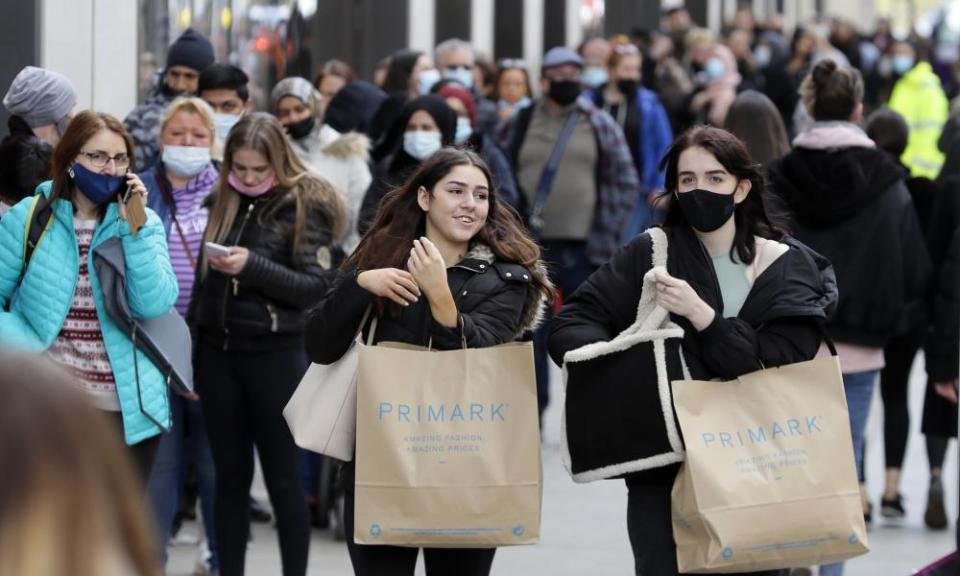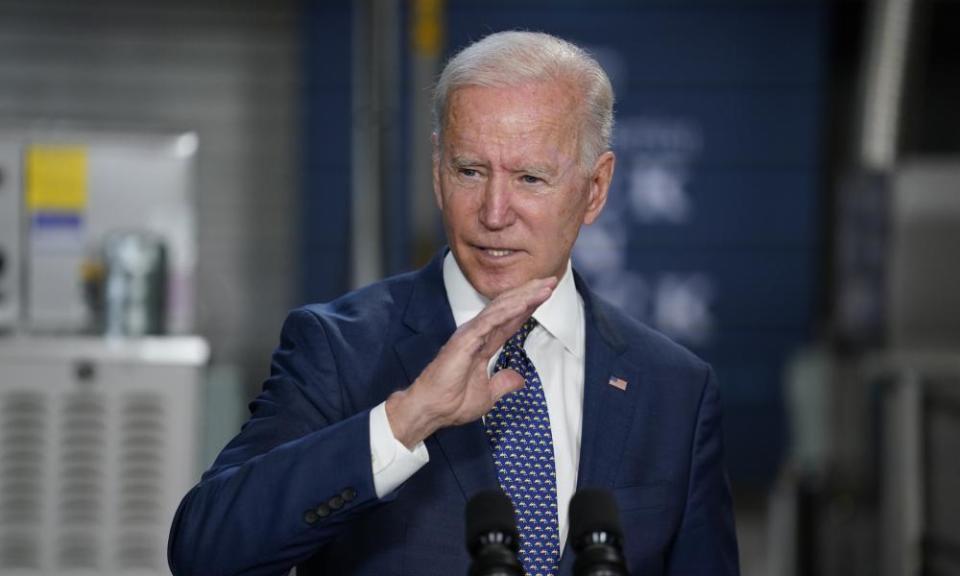The fear that haunts markets – is inflation coming back?

The spectre of inflation had investors on the run last week. With no handbook to guide them on how economies behave in a pandemic, markets are struggling to predict whether a post-Covid recovery will be so strong as to bring with it a tidal wave of spending that sends prices spiralling.
Investors are spooked because rising inflation, which threatens investment and consumer spending, would need to be tamed by a rise in currently rock-bottom interest rates – and that would be anathema to markets and a corporate sector that have grown used to cheap money.
Related: Record metals boom may threaten transition to green energy
At the beginning of last week, stock markets panicked when figures suggested US inflation had already started to take off, adding to concerns that it could take hold in the UK. By the time markets closed on Friday, the panic seemed to have abated and stocks had risen. But the debate on whether inflation will take root around the world has begun. What is the likely way ahead?
Why inflation might increase
A surge in consumer spending UK households have saved about £160bn over the past 14 months, according to the National Institute of Economic and Social Research (NIESR). As much as 20% of that could be spent before the end of the year, says the Bank of England’s chief economist, Andy Haldane.
The official line from the central bank is that households will spend closer to 5%, but still, that could mean too much money chasing too few goods, especially when Brexit has combined with the pandemic to restrict imports and limit what is available in the shops.
Higher commodity prices In 2010, when the world was still coping with the fallout from the financial crash, the price of oil soared above $120 a barrel. With the price of copper and other commodities following suit, the UK’s inflation rate hit 5.2% in 2011 – more than twice the Bank of England’s target of 2%. Immediately after the first lockdown in March 2020, the cost of a barrel of Brent crude dropped to almost $20. Last week it had recovered to $70. There has also been a broad rally in metals prices, with copper hitting record levels this month along with iron ore; but in recent days they have fallen back slightly.
A jobs mismatch The pandemic has accelerated several trends in the workplace and in consumer spending. Working from home means that better broadband is among many of the new requirements of living. BT is one of hundreds of companies to say it is on a hiring spree now that most people are vaccinated and Covid restrictions are due to almost disappear in June. For a while at least, the lack of skilled staff means a prospective BT engineer could bid up their wages. If this is replicated across the economy, wages will spiral and the extra income will feed into the savings splurge, increasing the pressure on prices even further.
Government stimulus The UK government has so far spent almost £300bn on rescuing households and businesses from the pandemic. The Bank of England injected a further £150bn into the economy last November before the third lockdown, taking its main stimulus programme – known as quantitative easing – to £895bn. Between them, they have set the economy up for a rapid recovery.
But while the Bank has shown no inclination to abandon its money printing in an effort to secure the recovery, the government expects to cut budgets next year. It could also begin raising taxes, effectively withdrawing a key element of growth from the economic equation. This is in contrast to the Biden administration in the US, which is expected to add to its existing $1.9tn stimulus package, and the eurozone, which has started dispensing €750bn, mainly across southern Europe.
Long-term problems There are several reasons why the UK and the global economy could suffer a longer-term mismatch of supply and demand, pushing up prices. A green tech revolution will demand an overhaul of most industrial processes and increase the demand for metals such as copper and cobalt. That could keep the prices of many goods, including electric cars, rising for years to come.
A decline in the number of working-age adults as the population ages (if we exclude the potential for immigration) will force employers to increase pay, intensifying the pressure to charge higher prices.
The pessimistic view
Haldane, who is set to leave the Bank this summer after 32 years, says that if Threadneedle Street’s forecast of 7.25% GDP growth proves correct, an inflationary spiral could be created that becomes entrenched, much as happened in the 1970s. In an article last week, he said the likelihood of a spending spree, higher commodity prices and the mismatch of jobs could convince companies they had no choice but to pass on extra costs to consumers.
“This momentum in the economy, if sustained, will put persistent upward pressure on prices, risking a more protracted – and damaging – period of above-target inflation. This is not a risk that can be left to linger if the inflation genie is not, once again, to escape us,” he wrote in the Daily Mail.
There are members of the US Federal Reserve board who agree and are likely to say so.
Adam Posen, the head of the Peterson Institute in Washington and a former Bank of England policymaker, also concurs that there is a risk inflation could get out of hand in the US in the wake of the Biden programme. Robert Shapiro, head of the Washington-based consultancy Sonecon and a government adviser in Bill Clinton’s second term, says: “It is impossible to throw this much money at the US economy and not get some inflation.”

But neither believes that, after a decade of policies aimed at increasing inflation that only succeeded in preventing prices from falling, a short burst of higher prices over the next year represents a problem.
The optimistic view
Neil Shearing, chief economist at the consultancy Capital Economics, said one of the difficulties faced by the markets was picking through the complex inflation data of the past year. One example is US air fares, which declined sharply while the Trump administration kept empty planes in the air, in contrast to the UK and European countries, which shut down the airline industry. Air fares have recovered in the US and, a year on, that increase is feeding into the consumer prices index; but in Europe, for the purposes of economic data over the past year, fares have remained the same.
Steven Blitz, chief US economist at the consultancy TS Lombard, says a sustained increase in spending over many years would need banks to be complicit in excessive lending once the savings glut is spent – and that is not likely to happen. He says another factor emphasising the short-term nature of the inflation problem is that China is passing on the prices it paid for raw materials at the height of the pandemic, when shipping freight costs rocketed. This too will fade.
Hande Kucuk, deputy director at the NIESR, says expansion will be kept in check by the uncertainty ahead. Those concerns include the number of companies that will fail once the UK furlough scheme ends; how many people will lose their jobs; and the prospect of new variants of Covid wreaking havoc.
Even inflation sceptics agree that everyone who drives a car in the US, Europe and the UK will see that prices at the pumps have increased. Hauliers are coping with much higher diesel prices than a year ago. In the 1970s, oil was the economy’s only lubricant, and a rise sparked significant inflationary pressures.
But oil is not the influence it once was, and although other commodities are on the rise, every major central bank – the Bank of England, the US Federal Reserve, the Bank of Japan and the European Central Bank – is forecasting that, over the medium term, inflation will remain close to or below the 2% target they share. This clear message means interest-rate rises are on the back burner for many years to come.

 Yahoo Finance
Yahoo Finance 